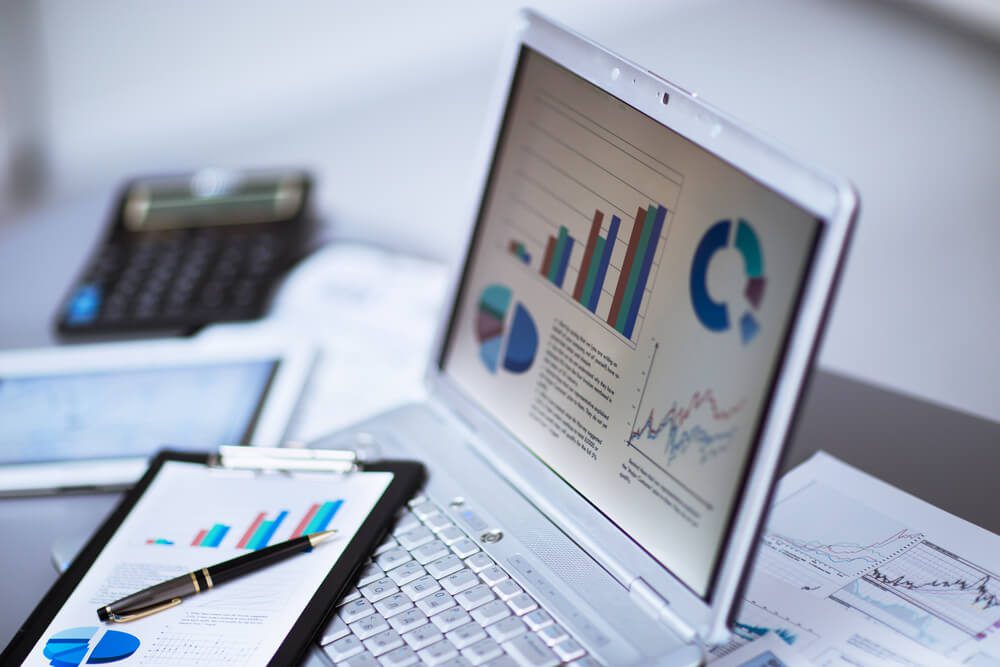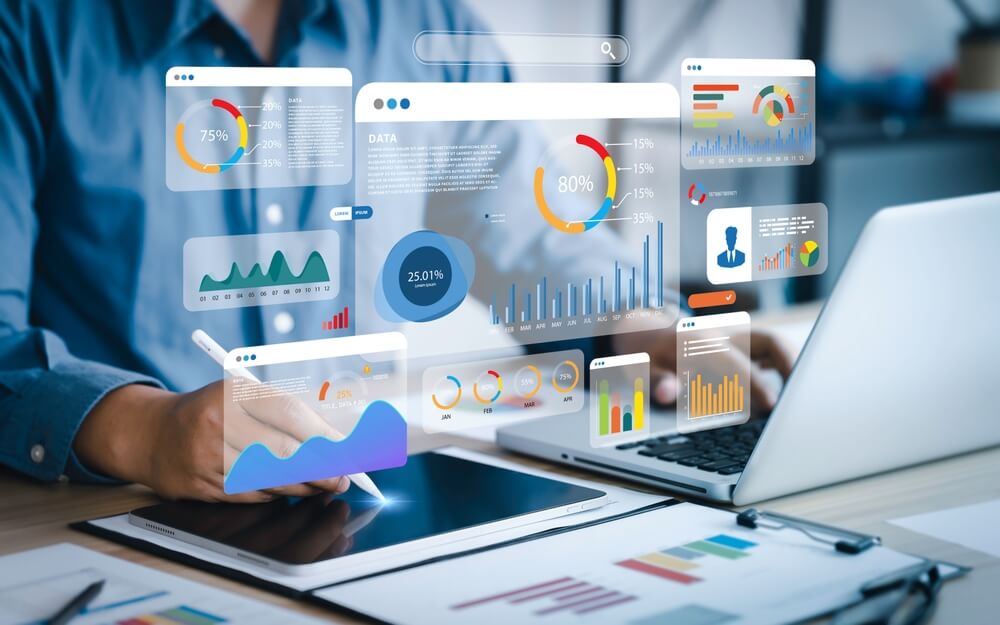
What Is the Best Way To Use Descriptive Analytics? (How-To)
The phrase "knowledge is power" rings particularly true in today's data-driven world. An analytics company in Chicago leverages descriptive analytics to convert raw data into valuable insights into past performance. This process, often the first stage in data analysis, serves as the launching pad for informed decision-making.
This guide delves into the optimal way to use descriptive analytics. It tackles the following steps:
- Defining objectives
- Identifying data sources
- Collecting data
- Visualizing data
- Calculating statistics
- Identifying key findings
- Communicating results
- Validating and refining
- Learning and improving
Ready to learn more? Let’s go!
Are you looking for a full-service digital marketing agency? See the DAP difference below!
1. Define Objectives
In order for descriptive analytics to serve your business well, you must set clear objectives. This means selecting a goal that aligns with your company's short- and long-term goals.
With clear goals established, you are ready to use descriptive analytics to learn more about your local business. It can help answer questions about finding sales trends, customer preferences, and areas of improvement.
Chicago-based businesses, for instance, must think about the problems or questions they want to answer in their area. They may seek to find out which products or services are sought-after in the city or how cultural factors affect sales. Knowing what they want to learn guides them through the process.
Ultimately, clear objectives are a guide for using descriptive analytics. They keep businesses focused on what truly matters, ensuring they are not distracted and working efficiently. Moreover, they help ensure every part of an organization is working towards the same goal.
2. Identify Data Sources

After you define your objectives, the next step is to identify the right data sources for the information you need. You can draw on various internal resources. These include sales reports, client databases, and operational records specific to your local market.
For instance, external data sources encompassing market research or industry reports on Chicago might offer invaluable insights. The data sources you choose should be dependable, accurate, and respond to the goals you created when developing your objectives.
3. Collect and Prepare Data
After identifying the necessary data sources, data collection and preparation follow. This process includes gathering data from the identified sources and organizing it in a manner suitable for analysis.
Furthermore, this step involves crucial preprocessing tasks such as data cleansing and formatting. Data cleansing ensures the removal of errors, duplicates, or inconsistencies in the dataset, ensuring its accuracy and reliability.
However, proper data formatting ensures data structures are conducive to the subsequent analysis. This step is critical because the quality of the data directly affects the accuracy of the analysis
4. Explore and Visualize Data
The next step is data exploration and visualization, where analysts study the cleaned and formatted data to identify patterns, trends, and anomalies. Understanding the properties and characteristics of the data requires methods such as data profiling and statistical analysis.
Moreover, visualizing the data through graphs, charts, and plots can aid in revealing patterns and trends that might not be apparent from looking at the raw data alone. This process assists in understanding the “big picture” of the dataset, thereby providing initial insights and direction for more detailed analysis in the subsequent stages.
5. Calculate Descriptive Statistics

This next step in the process involves the computation of descriptive statistics. The essence of descriptive analytics lies in its ability to summarize data and provide a comprehensive picture of the available data. Descriptive statistics include the following:
- Central tendency measures: This refers to the statistics that describe the center of a data set, where most of the numbers fall.
- Dispersion measures: These statistics measure how spread out the numbers in the data set are. They tell you how much the numbers differ from the central tendency (range, variance, and standard deviation).
- Distribution measures: These are statistics that describe the shape of the distribution of the data (skewness, kurtosis).
Calculating these measures allows businesses to understand their data’s characteristics precisely. For instance, measures of central tendency provide insight into average customer behavior or the most common patterns of moving through a website.
Simultaneously, dispersion measures illustrate any variability in the data. Consequently, these statistics are instrumental in forming an accurate understanding of the data, thus laying the groundwork for the succeeding steps.
6. Calculate Descriptive Statistics
The next task is to delve deeper into the analysis by calculating descriptive statistics. Descriptive statistics summarize the data by describing its central tendency, dispersion, and distribution.
Central tendency measurements, such as mean, median, and mode, give a sense of the data's 'average' or 'middle' value. Dispersion measurements, such as variance and standard deviation, offer insights into the spread or variability of the data. These measures aid in understanding the range within which most data points lie.
In this step, businesses should also look at the distribution of data. They must examine patterns, skewness, and outliers, which can affect the analysis results. Correctly interpreting these statistics is critical for gleaning accurate insights from the data.
7. Identify Key Findings
Identifying the key findings of the analysis is a two-part task. The first is extracting meaningful insights from the explored data and statistics. The second is linking these insights back to the defined objectives.
For instance, the findings from a descriptive analytics project for a data-driven marketing campaign in Chicago can reveal customer behavior or preference patterns. These insights can guide future marketing strategies, ensuring they are more tailored and effective.
8. Communicate Results

Effective communication of the results is as important as the analysis itself. After identifying the key findings, those in charge must clearly and comprehensively present these insights. Using simple language, data visualization techniques, and succinct summaries can significantly improve the clarity and effect of the presented results.
Moreover, it is advisable to share the results to relevant stakeholders. Doing so ensures that they can make informed decisions based on the findings.
For example, if the analysis was part of an AI-driven data management project, sharing insights with the team responsible for developing AI models would be beneficial. They can then modify the models or strategies in light of the findings from the analysis, making the project better reflect the company's goals.
9. Learn and Improve
The final step in the effective use of descriptive analytics is a commitment to learning and continuous improvement. As the Chicago market continues to evolve, a stagnation in analytical capabilities can result in missed opportunities or misguided decision-making.
A culture that embraces data-driven decision-making and is open to change is crucial for this process. Companies must keep improving their analytical capabilities. They can do this through:
- Enhanced data collection methods,
- Advanced analytics techniques, and
- Superior interpretation of results.
Combined, these ensure that their use of descriptive analytics remains relevant, effective, and impactful in driving strategic and operational decisions.
Summing Up
Effectively leveraging descriptive analytics is a strategic necessity in today's data-driven world. With this guide, businesses, especially those in Chicago, can navigate the complexities of data management and make informed decisions that drive growth.
Partner with an analytics company in Chicago to fully harness the power of data and analytics. Contact Digital Authority Partners today. Let us explore how we can help your business leverage data.
Want To Meet Our Expert Team?
Book a meeting directly here




